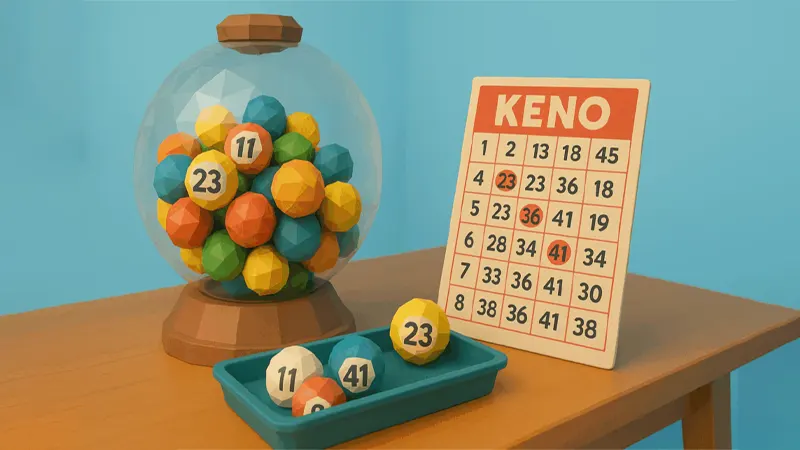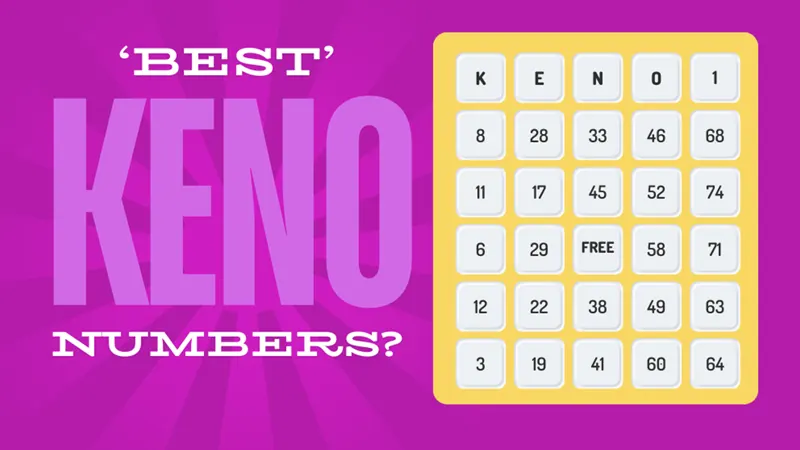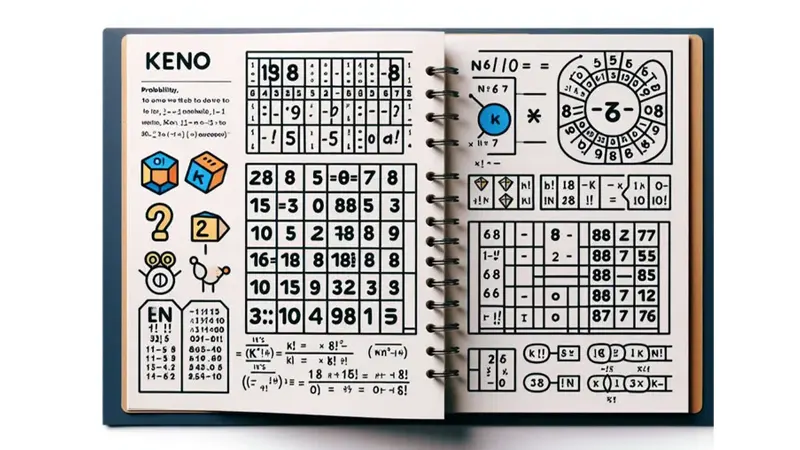Online Keno has emerged as one of the most popular number games across various gaming platforms, including 82 Lottery, captivating players with its fast-paced nature and seemingly simple gameplay. The game’s appeal lies in its accessibility—players can quickly select numbers, watch the draw, and potentially win substantial prizes within minutes. This instant gratification makes Keno particularly attractive to those seeking quick entertainment and the thrill of potential winnings.
However, beneath its straightforward exterior, Keno presents unique challenges that can trap unwary players. The combination of rapid gameplay and the allure of big payouts can lead to impulsive decision-making and poor number selection strategies. Many players fall into the trap of relying purely on luck or superstition, making choices based on emotions rather than logical analysis.
The importance of developing intelligent number selection strategies cannot be overstated. While Keno does involve elements of chance, players who approach the game with systematic thinking and disciplined bankroll management tend to enjoy more sustainable and enjoyable experiences. At 82 Lottery, successful players consistently demonstrate that combining observation, calculation, and self-discipline yields better long-term results than relying on pure chance or emotional impulses.
Understanding Online Keno: Probability Over Pure Randomness
Online Keno operates on a foundation of mathematical probability rather than complete randomness, despite common misconceptions. The game mechanism involves players selecting numbers from a predetermined range, typically 1-80, while the system generates winning numbers through sophisticated random number generators. However, this doesn’t mean that all approaches to number selection are equally valid or effective.
Statistical analysis reveals that while each individual draw is independent, patterns and trends can emerge over extended periods. These patterns don’t guarantee future outcomes, but they can provide valuable insights for informed decision-making. The key is understanding that probability works over large samples, not individual games.

At 82 Lottery, experienced players have discovered that success comes from combining careful observation of historical results with calculated risk management. This approach doesn’t eliminate the element of chance inherent in Keno, but it provides a more structured framework for making number selections. Players who maintain detailed records of draw results and analyze trends over time often develop more effective strategies than those who rely solely on intuition or random selection.
The distinction between randomness and probability is crucial for Keno players. While individual draws are random, the underlying mathematical principles governing the game create opportunities for strategic play. Understanding concepts such as hot and cold numbers, frequency analysis, and pattern recognition can significantly improve a player’s approach to the game.
Common Mistakes in Online Keno Play
Chasing Numbers After Losses
One of the most destructive habits in Keno is the tendency to repeatedly select the same numbers after they fail to appear in recent draws. This behavior stems from the gambler’s fallacy—the mistaken belief that past results influence future outcomes. Players often convince themselves that numbers that haven’t appeared recently are “due” to come up, leading them to increase their bets on these selections.
This approach is mathematically flawed because each Keno draw is independent of previous results. A number that hasn’t appeared in fifty consecutive draws has exactly the same probability of appearing in the next draw as any other number. The danger lies not just in the flawed logic, but in the escalating bets that often accompany this strategy, leading to rapid bankroll depletion.
Random Number Selection Without Documentation
Many players approach Keno with a completely intuitive mindset, selecting numbers based on momentary feelings or arbitrary preferences without maintaining any record of their choices or results. This approach eliminates any possibility of learning from experience or identifying potentially useful patterns in their play.
Without documentation, players cannot assess the effectiveness of their strategies or identify recurring mistakes. They remain trapped in a cycle of purely emotional decision-making, unable to develop more sophisticated approaches to the game. The absence of systematic record-keeping also makes it impossible to manage bankroll effectively or recognize when it’s time to adjust strategies.
Increasing Bets After Losing Streaks
The impulse to increase bet sizes after experiencing losses is perhaps the most dangerous psychological trap in Keno. This behavior, known as “chasing losses,” is driven by the desire to recover previous losses quickly through larger wins. However, this strategy often leads to accelerated losses rather than recovery.

The mathematical reality is that increasing bet sizes doesn’t improve the probability of winning individual games. Instead, it increases the potential impact of continued losses, creating a situation where a few additional losing games can eliminate the entire bankroll. This emotional response to losses often occurs when players are already in a frustrated or desperate state of mind, leading to increasingly poor decisions.
Relying on Superstitious Beliefs
Many Keno players develop elaborate superstitious systems for number selection, such as choosing numbers based on birthdays, anniversaries, or other personally significant dates. While these methods might provide psychological comfort, they have no mathematical basis and can actually limit a player’s strategic options.
Superstition-based number selection often leads to choosing numbers within a narrow range (such as 1-31 for calendar dates), which may not represent the optimal distribution across the entire number field. Additionally, these beliefs can create false confidence that leads to poor bankroll management and unrealistic expectations about winning probabilities.
Intelligent Number Selection: Practical Insights from 82 Lottery
Historical Result Analysis
The foundation of intelligent Keno play lies in systematic analysis of historical draw results. This doesn’t mean that past results predict future outcomes, but rather that understanding frequency patterns can inform more strategic number selection. Players should maintain detailed records of draw results over extended periods, noting which numbers appear frequently and which appear less often.

This analysis should focus on identifying numbers that appear with moderate frequency rather than chasing the most or least frequent numbers. Numbers that appear too frequently might be due for a cooling-off period, while numbers that never appear might continue their absence. The most strategic approach often involves selecting numbers that show consistent, moderate frequency patterns.
Strategic Number Distribution
Rather than selecting numbers randomly or based on personal preferences, intelligent players distribute their choices across different categories. This includes balancing selections between odd and even numbers, high and low numbers, and numbers from different decades within the range.
A balanced approach might involve selecting 40% of numbers from the lower half of the range (1-40) and 60% from the upper half (41-80), or maintaining a roughly equal split between odd and even numbers. This distribution strategy helps avoid the common mistake of clustering selections in a narrow range, which can limit winning potential.
Optimal Number Quantity Selection
The number of selections made in each game significantly impacts both winning probability and potential payouts. Selecting too few numbers reduces the chance of matching winning numbers, while selecting too many numbers increases the cost and may actually decrease the overall return on investment.

Research and experience at 82 Lottery suggest that selecting between 4-8 numbers often provides the best balance between winning probability and payout potential. This range offers reasonable chances of achieving partial matches while maintaining the possibility of significant wins through complete or near-complete matches.
Consistency in Number Selection
While it’s important to analyze and adjust strategies based on results, constantly changing number selections based on short-term outcomes can be counterproductive. Keno patterns may take time to develop, and abandoning a potentially sound strategy after a few unsuccessful games can prevent players from realizing long-term benefits.
Successful players often maintain a core set of numbers while making gradual adjustments based on extended performance analysis. This approach allows for strategic evolution while avoiding the emotional volatility that comes with constant changes in selection approach.
Avoiding Common Keno Traps
The Certainty Feeling Trap
One of the most dangerous psychological states in Keno is the feeling of certainty about upcoming results. This often occurs when players observe a pattern in recent draws and become convinced they can predict the next outcome. For example, after several draws producing mostly even numbers, players might feel certain that odd numbers are due to appear and bet heavily on this assumption.
This trap is particularly dangerous because it combines mathematical misunderstanding with emotional overconfidence. The reality is that each draw is independent, and recent patterns have no predictive value for future results. When players act on these false certainties, they often make larger bets than usual, leading to significant losses when their predictions prove incorrect.
The Quick Recovery Trap
Following a series of losses, many players fall into the trap of attempting rapid recovery through increased bet sizes or more frequent play. This approach is based on the flawed belief that continued play will eventually lead to wins that offset previous losses.

The mathematical reality is that increasing bet frequency or size doesn’t improve the fundamental odds of winning individual games. Instead, it accelerates the rate at which losses can accumulate, often leading to complete bankroll depletion before any recovery can occur. The most effective approach after experiencing losses is to maintain consistent betting patterns and allow probability to work over time.
The Single Number Set Trap
Some players develop strong attachment to specific number combinations and continue selecting them game after game, regardless of results. While consistency can be valuable, blind adherence to a single set of numbers can prevent adaptation to changing patterns and may not represent the optimal strategy for long-term success.
This trap often develops when players have experienced success with particular numbers in the past, leading them to believe these numbers are somehow “lucky” or more likely to win. The reality is that all number combinations have equal probability in each individual draw, and past success doesn’t guarantee future results.
The Absolute Luck Trap
Perhaps the most fundamental trap in Keno is the belief that success depends entirely on luck, leading players to abandon all strategic thinking and bankroll management. This mindset often manifests as complete randomness in number selection, inconsistent betting patterns, and failure to set appropriate limits on losses.
While luck certainly plays a role in Keno outcomes, players who rely exclusively on luck without any systematic approach to the game often experience more volatile and ultimately less satisfying results. The combination of strategic thinking with acceptance of the game’s inherent randomness provides a more balanced and sustainable approach.
Managing Bankroll and Maintaining Psychological Stability
Effective bankroll management represents the cornerstone of sustainable Keno play. Players should allocate only a small percentage of their disposable income to Keno, ensuring that potential losses won’t impact their financial stability or quality of life. A common recommendation is to limit Keno spending to no more than 5-10% of entertainment budget.
Setting clear win and loss limits before beginning each session provides crucial protection against emotional decision-making. When the predetermined loss limit is reached, players should stop immediately, regardless of any urges to continue playing. Similarly, achieving the win target should signal the end of the session, protecting gains from being erased by continued play.

Regular breaks during extended play sessions help maintain mental clarity and prevent the gradual erosion of judgment that can occur during prolonged gaming. These breaks provide opportunities to reassess strategies, review results, and ensure that play remains within predetermined limits.
The 82 Lottery experience consistently demonstrates that players who view Keno as entertainment rather than a wealth-building opportunity enjoy more positive experiences and achieve better long-term results. This perspective shift helps maintain emotional equilibrium and prevents the development of unrealistic expectations that can lead to poor decision-making.
Achieving Sustainable Success in Online Keno
Online Keno’s appeal lies in its perfect balance of accessibility, excitement, and strategic depth. While the game will always involve elements of chance that cannot be controlled or predicted, players who approach it with intelligence, discipline, and realistic expectations can enjoy sustained entertainment value and occasional winning sessions.
The key to long-term success lies not in finding a foolproof winning system, but in developing a comprehensive approach that combines intelligent number selection, effective bankroll management, and psychological discipline. Players who master these elements find that Keno becomes a more engaging and less stressful form of entertainment.
These principles of disciplined play and strategic thinking extend beyond Keno to other games of chance. Whether playing Roulette or any other casino game, the fundamental concepts of bankroll management, emotional control, and realistic expectations remain universally applicable for responsible gaming.
This balanced approach transforms Keno from a potentially frustrating gamble into an engaging strategic challenge that can provide hours of entertainment while respecting both the mathematical realities of the game and the personal financial boundaries that ensure responsible play.


